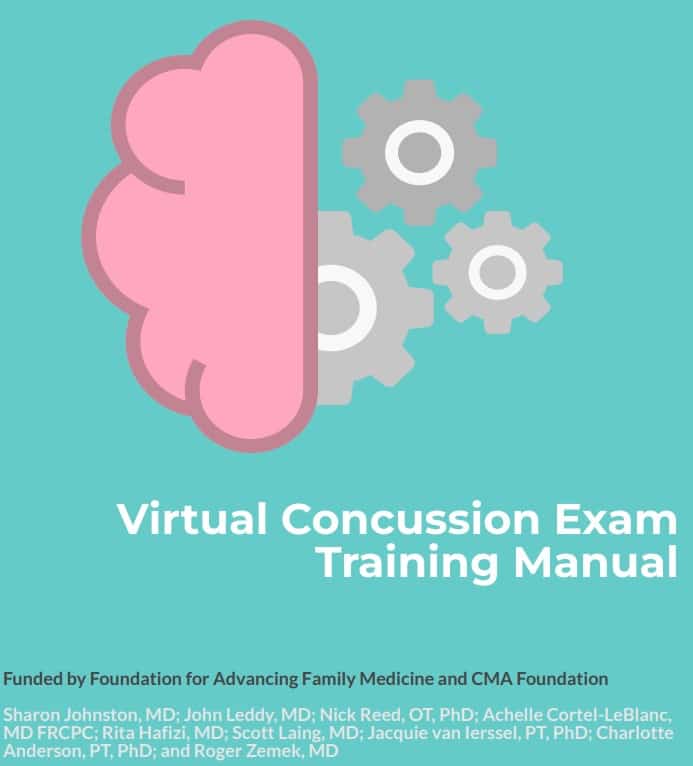Virtual Concussion Exam (VCE) Manual: A training resource to assist front-line healthcare professionals who are caring for concussion patients that cannot be seen in person or have already had an in-person assessment and require follow-up.
download the Virtual Concussion Exam Manual PDF

A training manual to assist front-line healthcare professionals who are caring for concussion patients that cannot be seen in person or have already had an in-person assessment and require follow-up.

Funded by Foundation for Advancing Family Medicine and CMA Foundation ![]()
Sharon Johnston, MD; John Leddy, MD; Nick Reed, OT, PhD; Achelle Cortel-LeBlanc, MD FRCPC; Rita Hafizi, MD; Scott Laing, MD; Jacquie van Ierssel, PT, PhD; Charlotte Anderson, PT, PhD; and Roger Zemek, MD
Virtual Concussion Care Exam Training Manual: This resource describes how to conduct a virtual concussion examination (VCE). When the only injury is a concussion, the majority of the objective exam will be normal. Most of the expected findings are subjective and this manual highlights some common or significant concussion findings and provides links to guidelines for management of these findings. A key purpose of a concussion exam is to identify any other more serious conditions through abnormal exam findings to initiate appropriate management. A VCE cannot provide certain important elements of a concussion assessment including fundoscopy, orthostatic vitals, dynamic gait, cardiovascular and respiratory examination. These additional elements require an in-person assessment and may aid in confirming the diagnosis, identifying other injuries or comorbidities or influence treatment decisions. This manual is not intended for use by people who have sustained or are suspected of having sustained a concussion/mTBI for self-diagnosis or treatment.
When is virtual care appropriate? Virtual concussion care may be appropriate when a patient cannot be seen in person or has already had an in-person assessment and needs follow-up. A virtual examination is not as complete as an in-person assessment and is not appropriate for the initial assessment of patients at high risk of intracranial injury or with multi-system trauma (e.g., high energy mechanism of injury). These higher risk patients should be examined in-person by an appropriate health care provider prior to virtual assessment. A virtual concussion examination may be appropriate for lower-risk patients with symptoms that are stable or improving and higher-risk patients that have been assessed in-person to exclude serious intracranial pathology. Health care providers must judge the appropriateness of a virtual examination for every encounter.
Return to Domain 15 of the Living Guideline for Pediatric Concussion Care: Telemedicine and virtual concussion care
